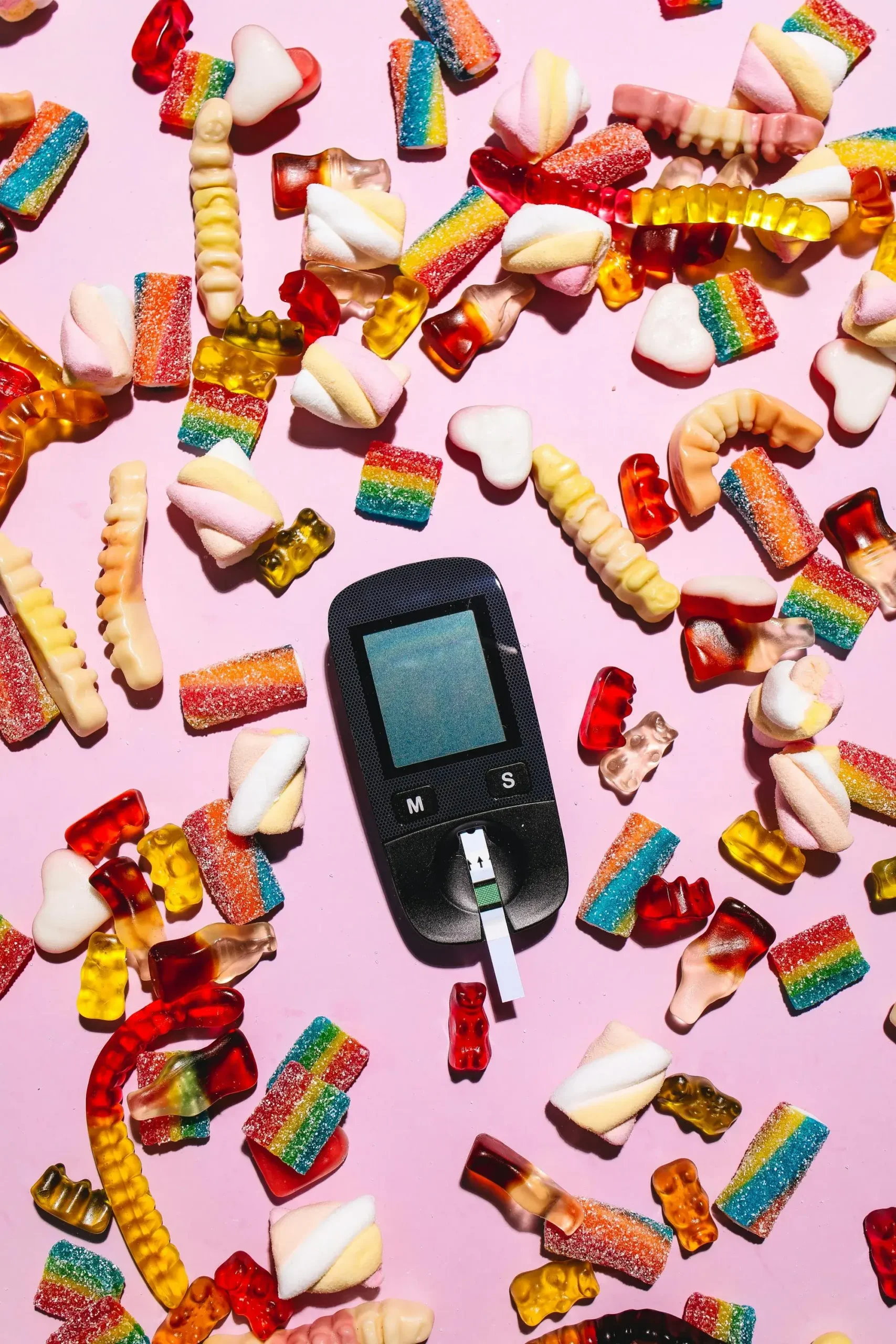Prediabetes is where you have higher than normal blood sugar levels, but not high enough to meet the criteria for a diabetes diagnosis.
According to the Center for Disease Control and Prevention, about 1 in 3 American adults has prediabetes, that is about 84 million adult Americans. About 90% of these adults do not know that they are currently living with prediabetes.
What causes prediabetes?
After eating food with carbohydrates, your body releases insulin from your pancreas. Insulin is a hormone that moves sugar from your blood, into the cells where it can be used to provide energy. Just like type 2 diabetes, prediabetes happens when your cells do not respond to insulin well enough (insulin resistant). Insulin resistance may be caused by a combination of a number of risk factors.
What are the symptoms of prediabetes?
Most people with prediabetes have no symptoms. If you have symptoms, they may include:
- Acanthosis nigricans, darkening of the skin in the armpits, neck, knees, or elbows
- Skin tags
- Blurry vision
- Fatigue
- Slow healing cuts or bruises
What are the risk factors of prediabetes?
Anyone can develop prediabetes. You may have higher chances of getting prediabetes if you:
- Are 45 years or older
- Are overweight or obese
- Have a sibling or parent with type 2 diabetes
- Have personal history of gestational diabetes
- Are physically inactive
- Have polycystic ovarian syndrome (PCOS)
- Smoke
- Have high blood pressure
- Have high blood levels of triglycerides — a type of fat in the body
- Are African American, Asian American or Hispanic
How is prediabetes diagnosed?
Because prediabetes usually causes no symptoms, it is usually diagnosed after a routine screening test. If you have risk factors, having tests done more often may help you identify the condition early. The tests that can be used to diagnose prediabetes are:
- Fasting blood glucose test: After fasting for at least 8 hours, a blood sample is drawn and taken to the laboratory for testing. Fasting blood glucose (sugar) of 70 to 99 mg/dl is normal. Impaired fasting glucose (IFG), where you have fasting blood sugar of 100 to 125 mg/dl, means you have prediabetes.
- Oral glucose tolerance test: In this test, you also have to fast. Your fasting blood sugar levels are measured, then you are given a solution with 75g of glucose. Two hours after taking the solution, your blood sugar levels are measured. If your 2-hour blood sugar levels are 140 to 199 mg/dl, you have impaired glucose tolerance and therefore are prediabetic.
- Hemoglobin A1c test: This test is also called an A1c test or glycated hemoglobin test. It is used to measure your average blood sugar levels over the past 2 to 3 months. You are not required to fast before this test. An A1c test result of 5.7% — 6.4% means you have prediabetes.
What are the complications of prediabetes?
If your prediabetes is not treated, it may worsen and eventually become type 2 diabetes. Other complications of untreated prediabetes include:
- Nerve damage
- Kidney disease
- Heart disease
- Eye disease
- Skin infections
How is prediabetes treated?
Prediabetes is a reversible condition. Lifestyle changes are the most important way to manage prediabetes, but you may also need medication. Taking small, intentional steps towards a healthier lifestyle reduces your risk of developing type 2 diabetes, or other complications. The management of prediabetes involves:
- Weight loss: Trying to lose excess weight may help to improve your body’s response to insulin and eventually lower your blood sugar levels. Reducing your weight by 7% has been shown to reduce your risk of developing type 2 diabetes by 58%.
- Exercise: Physical activity not only helps you to lose weight, but also reduces your blood sugar levels by increasing glucose usage and improving insulin sensitivity. You need to aim for moderate-intensity aerobic activities at least 30 minutes a day, for 5 days a week. The activities you may choose to engage in include walking, running, swimming, cycling, dancing, and so on.
- Diet: Eating complex carbohydrates and reducing how much processed sugars you consume helps to control your blood sugar levels. You still need to incorporate protein, fat, and fiber into your diet so that you remain healthy. A dietitian can help you to develop and stick to a diet plan that is best for your condition.
- Medication: In some cases, your doctor may prescribe medication to help you manage your condition. Oral anti-diabetes medications, metformin and acarbose have been shown to reduce the risk of developing diabetes.
How can prediabetes be prevented?
Some risk factors for prediabetes like age, race, and family history cannot be changed. But you can work on some modifiable risk factors to help you reduce the likelihood of developing prediabetes. Steps you can take include:
- Being physically active
- Maintaining a weight that’s healthy for you
- Maintaining a healthy diet
- Getting help to stop smoking
- Controlling your blood pressure, if you are hypertensive
What should I remember?
Prediabetes is a warning sign that your blood sugar levels are higher than normal, but not yet high enough for a diabetes diagnosis. It is a critical opportunity to take action and prevent the progression to type 2 diabetes. Lifestyle changes, such as eating a balanced diet, increasing physical activity, and maintaining a healthy weight, can significantly reduce your risk.
Early intervention is key. Regular check-ups and blood sugar monitoring help track progress and adjust your plan as needed. By making these changes now, you can protect your health and avoid the complications associated with the condition.











